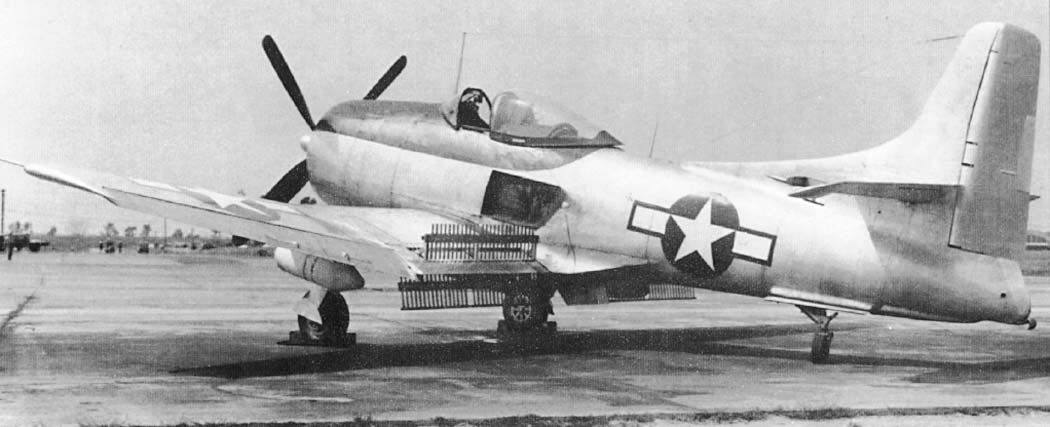Kaiser-Fleetwings XBTK
The Kaiser-Fleetwings XBTK was a dive and torpedo bomber developed for the United States Navy starting in 1944. After only five examples had been built, with the first two being flying prototypes; the contract was terminated in September 1946.
Development
In early 1942, the U.S. Navy’s Bureau of Aeronautics (BuAer) was planning the replacements for the Curtiss SB2C Helldiver dive bomber and the Grumman TBF Avenger torpedo bomber. The aircraft was to carry the torpedo in an internal bomb bay. By late 1943 it became obvious that the proposed VBT design like the Douglas SB2D had drastically increased in size and weight. Consequently, the U.S. Navy initiated a smaller dive bomber design, intended for escort carrier operation. The BuAer recognized the engineering workload for the major wartime programs and therefore assigned the design to companies without a major wartime production contract. BuAer selected Fleetwings at Bristol, Pennsylvania (USA), which was acquired by Henry J. Kaiser in 1943.
The XBK dive bomber program was initiated in February 1944 with a contract for two prototypes. To keep the aircraft size down, it was decided that all stores would be carried externally. A radar could be carried underneath the left wing. The dive brakes were of the lower and upper picket fence type at the inboard wing trailing edge. The horizontal tail was mounted on the tailfin above the fuselage. This feature avoided empennage buffet when the dive brakes were open. The placement of the engine exhausts was unusual, being almost aft of the cockpit. It was hoped that this feature would significantly decrease drag.
Production
A mockup inspection without engine was carried out in April 1944 while the engine was installed in May 1944, with completion of the first prototype scheduled for November 1944. To speed up later production, the U.S. Navy even constructed a new airfield at the Fleetwing plant. In early 1945, BuAer requested that the aircraft would be able to carry a torpedo. The weapon was fitted to a new centreline station and the designation was changed to XBTK. The first XBTK-1 was finally completed in March 1945, making its first flight on 12 April 1945 at the hands of Fleetwings’ test pilot Bill Engle. The pilot’s logs for initial taxi -runs and the maiden flight are included at the end of the photos. With the permission of Bill Engle Jr. Test pilot Bill Engle’s flying history and access to his log books can be found here.
The U.S. Navy terminated the contract on 3 September 1946, as there was no need for the aircraft anymore. The five prototypes were scrapped, with the two flying examples broken up by April 1946.


































